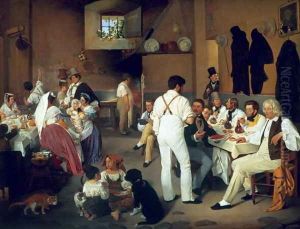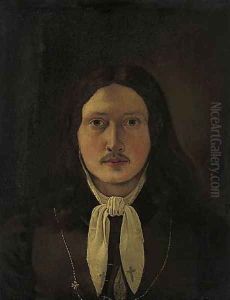Ditlev Conrad Blunck Paintings
Ditlev Conrad Blunck was a Danish painter associated with the Danish Golden Age during the first half of the 19th century. He was born on June 22, 1798, in Neustrelitz, in what is now Germany, but at the time was part of the Danish state. Blunck demonstrated an early talent for art, which led him to study at the Royal Danish Academy of Fine Arts in Copenhagen. There, he trained under some of the era's most prominent Danish artists, including Christoffer Wilhelm Eckersberg, who is often referred to as the 'father of Danish painting.'
Blunck's artistry is marked by his contributions to both history painting and portraiture. In the 1820s, he traveled extensively throughout Europe, which was common for artists of the time. His journeys took him to Paris and Rome, where he was influenced by the works of classical antiquity and the Renaissance, as well as by contemporary neoclassical trends. Blunck's early works reflect these influences, but as he matured, his style began to incorporate more elements characteristic of the Danish Golden Age, such as a focus on naturalism and light.
In 1830, Blunck became a member of the Academy in Copenhagen and received commissions from the Danish Royal Family. However, his career faced challenges due to a scandal involving his personal life, which led to his exclusion from the Academy in 1846. After this incident, Blunck's prominence in the Danish art scene diminished, and he spent his later years in relative obscurity.
Despite this, Ditlev Blunck's contributions to Danish art remain significant. His works are characterized by their realistic depiction of figures and attention to detail, which has earned him a place among the notable artists of the Danish Golden Age. Blunck passed away on January 7, 1854, in Hamburg, Germany. Today, his paintings can be found in the collections of various museums, including the Statens Museum for Kunst (the National Gallery of Denmark) in Copenhagen, where his legacy as part of Denmark's rich artistic heritage continues to be celebrated.

